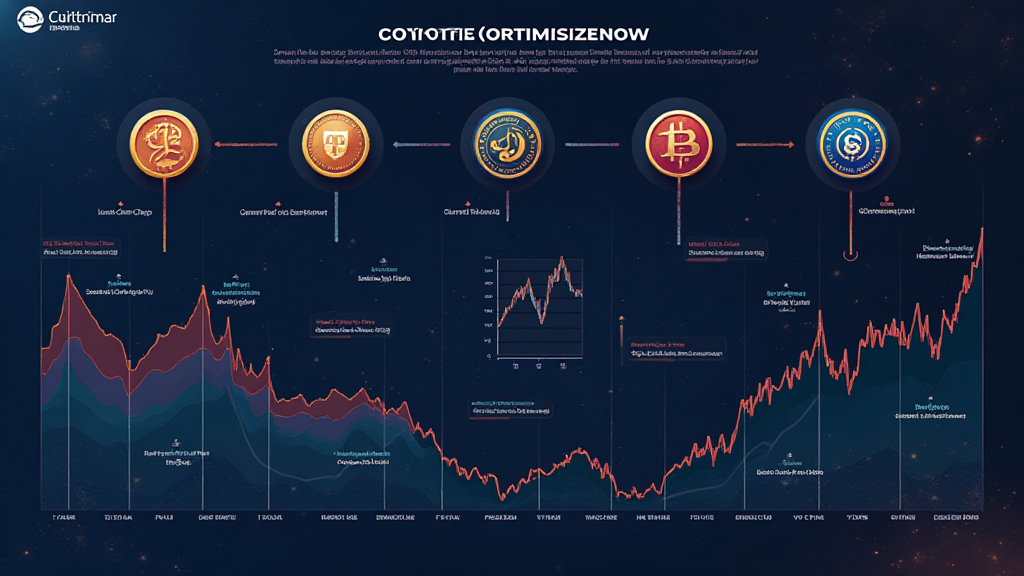Bitcoin Credit Scoring Models: The Future of Credit Assessment in Cryptocurrency
Introduction
With recent reports estimating that over 4.1 billion USD has been lost to hacks in decentralized finance (DeFi) in 2024, the security of cryptocurrency transactions has never been more critical. This staggering figure highlights the importance not just of securing digital assets but also of understanding the creditworthiness of potential users in the blockchain ecosystem. As institutions and individuals alike begin to explore the booming world of cryptocurrencies, the need for reliable Bitcoin credit scoring models becomes increasingly apparent.
This article explores the innovative frameworks emerging to evaluate creditworthiness in the realm of digital assets, shedding light on their relevance in assessing user behavior and financial reliability. We will also discuss how these models can streamline lending processes, reduce risks for lenders, and improve financial access for users. The value of these models is not only in reducing risks but also in fostering a more inclusive financial environment.
Understanding Bitcoin Credit Scoring Models
To grasp how Bitcoin credit scoring models function, let’s first establish what constitutes a credit scoring system. Traditionally, credit scores are numerical representations of a user’s creditworthiness based on their credit history and financial behaviors. However, Bitcoin credit scoring incorporates unique variables due to the decentralized nature of cryptocurrencies.

For instance, instead of relying solely on traditional credit histories, these models often analyze various metrics, including transaction volumes, wallet balances, and even behavioral patterns detected on blockchain networks. Consider Bitcoin as a digital vault, where assessing the contents (transactions) can provide insights into the owner’s reliability.
Key Components of Bitcoin Credit Scores
- Transaction History: Users with an extensive transaction history might have enhanced scores, indicating responsible usage of assets.
- Wallet Balances: Higher balances often indicate wealth stability, potentially improving credit scores.
- On-chain Activity: Regular and consistent activity usually reflects a well-managed asset, positively influencing credit assessments.
- Peer Recommendations: Like social ratings on platforms, community feedback can play a role in scoring.
Benefits of Bitcoin Credit Scoring Models
One of the primary advantages of employing Bitcoin credit scoring models is their potential to widen access to financial services. Several regions, including Vietnam, have seen an increasing user base of users interested in cryptocurrency, with a projected growth rate of 42% in 2025. This growth can foster the need for efficient credit assessment mechanisms.
Let’s explore some of the notable benefits:
- Inclusive Lending: With traditional credit systems often leaving many underserved, Bitcoin credit scoring can democratize access.
- Reduced Fraud: By analyzing on-chain activities, lenders can better gauge the accuracy of reported financial behaviors.
- Decentralized Trust: These models utilize decentralized ledgers, reducing the risks associated with centralized credit bureaus.
The Role of Data Privacy and Security in Credit Scoring
As we delve deeper into Bitcoin credit scoring models, it’s crucial to discuss the role of data privacy. While analyzing on-chain data can enhance the accuracy of credit assessments, it also raises significant privacy concerns.
Here’s the catch: While transparency can reduce fraud, it also risks exposing sensitive financial habits to unwanted scrutiny. Therefore, developers of credit scoring models need to strike a balance between utilizing data effectively and ensuring user privacy.
Potential Drawbacks of Current Models
While Bitcoin credit scoring models present numerous advantages, they are not without their challenges. Users coming from a traditional finance background may find it hard to adapt to a fully decentralized credit system. Some of the potential drawbacks include:
- Complexity of Scoring Algorithms: The intricacies of these models can lead to confusion among potential users.
- Lack of Regulatory Framework: Current frameworks governing cryptocurrencies may fail to address the unique aspects of crypto credit scoring.
- Dependence on Blockchain Adoption: Regions with low blockchain engagement might see limited benefits.
Future Trends in Bitcoin Credit Scoring
As the cryptocurrency landscape continues to evolve, it’s essential to identify emerging trends that could shape the future of Bitcoin credit scoring models. Several innovations are gaining traction that promises to enhance credit assessment processes:
- Integration of AI: Incorporating artificial intelligence can enable predictive modeling, providing better risk assessments.
- Social Media Data: Expanded analysis incorporating social signals may add another dimension to creditworthiness evaluation.
- Collaborative Scoring:** New partnerships between companies can enhance user scores based on collaborative data.
Conclusion
Bitcoin credit scoring models are paving the way for a new era in credit assessment, effectively bridging the gap between the traditional financial systems and the decentralized world of cryptocurrencies. Their ability to adapt to different variables intrinsic to blockchain technology positions these models as crucial tools in evaluating creditworthiness.
As more individuals venture into the world of Bitcoin, understanding their credit scores will play a vital role in enhancing financial accessibility. The innovative approaches taken to assess creditworthiness in this domain will continue to evolve, adapting to user needs and market conditions.
Embracing innovative scoring models now may well be the key to unlocking broader acceptance and utilization of cryptocurrencies, making financial systems more inclusive worldwide.
For further insights into cryptocurrency developments and trends, explore more at techcryptodigest.





